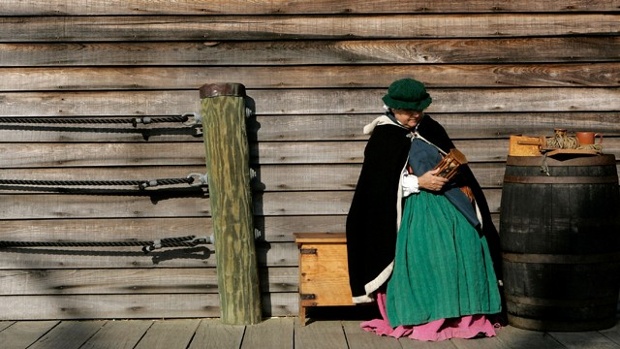-
Tips for becoming a good boxer - November 6, 2020
-
7 expert tips for making your hens night a memorable one - November 6, 2020
-
5 reasons to host your Christmas party on a cruise boat - November 6, 2020
-
What to do when you’re charged with a crime - November 6, 2020
-
Should you get one or multiple dogs? Here’s all you need to know - November 3, 2020
-
A Guide: How to Build Your Very Own Magic Mirror - February 14, 2019
-
Our Top Inspirational Baseball Stars - November 24, 2018
-
Five Tech Tools That Will Help You Turn Your Blog into a Business - November 24, 2018
-
How to Indulge on Vacation without Expanding Your Waist - November 9, 2018
-
5 Strategies for Businesses to Appeal to Today’s Increasingly Mobile-Crazed Customers - November 9, 2018
Remains of 4 early U.S. colonial leaders found in Virginia
A recent excavation in Jamestown, Virginia has led to the discovery and identification of the bodies of four long-lost leaders of the first permanent English settlement in the Americas, and the discovery could provide new insight into what life was like there in the 1600s.
Advertisement
Michael Lavin, senior conservator with Jamestown Rediscovery, said the box is significant because “artifacts associated with burial are extremely rare”. The discovery was remarkable for several reasons, including its substantial size for the time – 64 feet by 24 feet – and its history as the site where Powhatan Pocahontas married colonist John Rolfe in 1614.
The men are the highest-ranking leaders of the colonies to have been unearthed, though researchers acknowledge the four are little known outside of scholarly circles.
According to the researchers, the remains belonged to Rev. Robert Hunt, Jamestown’s first Anglican minister, who served the colony until his death; Capt. Gabriel Archer, a nemesis of one-time colony leader John Smith; Sir Ferdinando Wainman, who is believed to be the first knight buried in America; and Capt. William West, who was killed in a battle with the local Powhatan indigenous tribe.
“This is an extraordinary discovery”, said James Horn, the president of the group Jamestown Rediscovery. And indeed, these men lived and died at a pivotal point in the colony’s history when it faced potential collapse owing to starvation, disease, and conflict. The Smithsonian forensic anthropologist Douglas Owsley and his colleagues then joined in the investigation and helped identify the founders.
Part of his mission was to Anglicise Native Americans by converting them to Christianity, but he died a year later aged about 39.
Most know John Smith as the founder of the first English colony in America. Chemical testing of his bones showed he was exposed to more lead in his life than the other three men, suggesting affluence. Wainman and William West were both related to the powerful baron. Researchers found the remains of a silk sash over the chest of his skeleton, likely indicating his military rank. The man with the silver box was identified as Captain Gabriel Archer, who may have been hiding his Catholic faith. The men were identified through a combination of historical documents and chemical analysis of their skeletons. The shape of the coffins (or lack thereof in one instance) and the remnants left behind, such as a Catholic silver reliquary and a ceremonial staff, provided other clues. The box was found resting on top of the coffin of Capt….
William Kelso, director of archaeology at the Jamestown foundation, told the publication that the Jamestown settlement was emphatically non-Catholic.
Advertisement
The silver box was too corroded for archaeologists to open, so Jamestown Rediscovery approached two companies – General Electric and Micro Photonics – to use their scanning technology to see inside. An accurate and measurable record of these burials as they lay in the ground not only preserves critical information for research, but also tells the story of North American history in a way never before possible. Researchers think it may be a Catholic artifact-which, if true, would reveal that “the Catholics’ effort to undermine the colony in its infancy was much more advanced and sophisticated than historians previously thought”, says Horn.





























